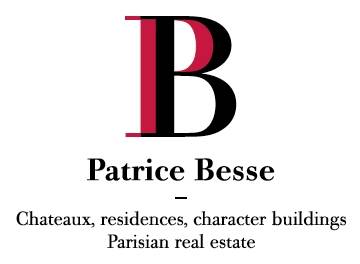A 19th-century chateau, with its chapel, convertible outbuildings and 25 hectares of grounds, between Nantes and Vannes - ref 180217
A 19th-century chateau, with its chapel, convertible outbuildings and 25 hectares of grounds, between Nantes and Vannes.
The property is located in the north-western part of the Loire-Atlantique department, part of the Pays de la Loire region, about thirty kilometres away from the ocean. In six kilometres, a town includes most essential services and shops, while a railway line makes it possible to easily reach the train stations in Nantes or Redon. In addition, the international airport is only 45 minutes away.
Dating from the 18th and 19th centuries, the property includes a little more than 25 contiguous hectares, within a peaceful wooded countryside. From a small public road, the chateau appears at the end of a long 300-metre bridal path planted with deciduous trees. The 460-m² edifice's main façades face east on the courtyard side and west towards the grounds. Built according to a symmetrical plan at the beginning of the 19th century, the central building's eastern side has a slate gable roof and is flanked on either end by two prominent pavilions, each topped with hipped roofs crowned with decorative finials. Creating the link between the two wings is a glass-enclosed winter garden adorned with artistic metalwork, which was added in 1910. The roughcast façades are cadenced by five vertical rows of rectilinear large-paned windows framed by ashlar stone quoins, the central row of which is crowned with a curvilinear pediment.
On the building's western side, a triangular pediment above a glass door, which provides access to the grounds, enlivens the façade's austere design, while white-painted wooden louvred shutters safeguard the windows on the first floor.
The chateau is surrounded by gravel, followed by vast lawns with the outbuildings and a chapel located to one side, while, on the other, there is a former farm and a number of annexes. The outbuildings comprise a floor area of approximately 660 m² and include, among other things, a stable with horse stalls, a cowshed, a bakehouse, a fruit cellar, a pressing shed, a granary, a barn and a caretaker's cottage. Behind the house is an enclosed vegetable garden of nearly 2,000 m², while the 18 hectares of surrounding mature forests guarantee the property's privacy.
The ChateauPartly built over vaulted cellars, it has three floors and includes: a garden level with the living spaces, an upstairs floor with five bedrooms, a top floor with five more bedrooms as well as a patio that runs along the chateau's entire back façade.
The ground floor
The front door is located in a vast glass and metalwork conservatory decorated with white wrought-iron scrollwork. Bathed in light and used as a winter garden, it has a colourful cement tile floor. A set of glass doors with leaded windows decorated with floral motifs, leads to an office with a moulded ceiling bathed in light thanks to a large picture window facing the courtyard. Opposite the conservatory, the original entrance hall has a black-and-white tile floor arranged in a chequerboard pattern. With a dual aspect, it reveals, at its other end via glass doors, the property's grounds extending to the west. This space also includes a quarter-turn wooden staircase, which leads upstairs. On one side, a living room with herringbone hardwood floors has a moulded plaster ceiling decorated with two ceiling roses as well as a wood stove framed by made-to-measure bookshelves, while a set of glass doors provides direct access to the patio and grounds. On the other side of the vestibule, a vast kitchen includes a dining area. With a rustic feel, thanks to its large stove, this room has conserved its polished stone floor. A pointed rubble stone wall and a herringbone hardwood floor defines the eating area, while another set of glass doors opens onto the grounds. An adjacent utility room with an original cement ...


